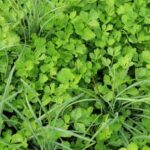For those who are new to gardening, indoor vegetable gardens provide the perfect opportunity to learn and grow their own food in a controlled environment. With the right tools, supplies, and techniques, even beginners can enjoy the benefits of growing vegetables indoors. In this article, we will explore why indoor vegetable gardens are ideal for beginners and provide a step-by-step guide to setting up and maintaining your own successful indoor vegetable garden.
Growing vegetables indoors offers several advantages for beginners. Firstly, it allows them to have more control over their plants’ environment, including temperature, lighting, and humidity levels. This means that beginners can create an optimal growing condition for their plants without having to worry about unpredictable weather conditions or pests.
Furthermore, indoor vegetable gardens are not limited by seasonal changes. Unlike traditional outdoor gardens, indoor gardens can be enjoyed year-round. This gives beginners the opportunity to continuously practice their gardening skills without having to wait for spring or summer seasons.
In addition to these benefits, indoor vegetable gardens also offer convenience. They can be easily accessed within the comfort of your own home, making it easier to tend to your plants on a daily basis. This accessibility is especially helpful for those with limited outdoor space or physical mobility issues.
In the upcoming sections of this article, we will delve deeper into the process of setting up and maintaining your own indoor vegetable garden. From choosing the right location and gathering essential tools and supplies to selecting suitable vegetables for indoor growing and avoiding common mistakes – we will cover all aspects that beginners need to know in order to successfully grow their own vegetables indoors. So let’s get started on this exciting journey of indoor gardening.
Benefits of Growing Vegetables Indoors
Growing vegetables indoors offers a range of benefits that make it an ideal option for beginners. Not only does it provide a convenient way to have fresh and homegrown produce year-round, but it also allows for greater control over the growing environment. In this section, we will explore the various benefits of indoor vegetable gardening.
Year-Round Gardening
One of the biggest advantages of growing vegetables indoors is the ability to garden all year long, regardless of the weather conditions outside. This means that you can enjoy fresh herbs, salad greens, and other vegetables even during the winter months when outdoor gardening is not possible. With indoor gardening, you are not limited to specific seasons or climate zones, giving you the freedom to grow your favorite veggies whenever you please.
Pest and Disease Control
Indoor vegetable gardens are less susceptible to pests and diseases compared to outdoor gardens. By bringing your plants indoors, you can effectively protect them from common garden pests such as aphids, snails, and slugs. Additionally, indoor environments provide better control over factors that contribute to disease development such as humidity and temperature fluctuations. This means that your plants are less likely to be affected by plant diseases like powdery mildew or fungal infections.
Greater Control Over Growing Conditions
When you grow vegetables indoors, you have complete control over their growing conditions including light exposure, temperature, and humidity levels. This control allows you to create an optimal environment for each plant species, ensuring they receive the necessary care for healthy growth and development. By adjusting these variables according to each plant’s requirements, you can maximize their productivity and overall health.
Choosing the Right Location for Your Indoor Vegetable Garden
One of the most important factors to consider when setting up an indoor vegetable garden is choosing the right location. The success of your garden will depend on finding a spot that provides the ideal conditions for plant growth. Here are some tips to help you choose the perfect location for your indoor vegetable garden.
First and foremost, you’ll want to find a spot that receives ample sunlight. Most vegetables require at least 6-8 hours of direct sunlight each day to grow properly. Look for a window or area in your home that gets plenty of natural light. If sunlight is limited, you may want to consider using artificial grow lights to supplement the light requirements of your plants.
In addition to sunlight, it’s important to consider temperature and humidity levels in your chosen location. Vegetables generally prefer temperatures between 65-75 degrees Fahrenheit (18-24 degrees Celsius) for optimal growth. Avoid placing your indoor garden in areas that are subject to extreme temperature fluctuations or drafts, as this can negatively affect plant health. Similarly, ensure that the humidity levels in the room are suitable for growing vegetables.
| Vegetable | Recommended Temperature Range (Fahrenheit) | Recommended Humidity Level (%) |
|---|---|---|
| Lettuce | 60-70 | 40-50 |
| Tomatoes | 65-85 | 40-60 |
| Bell Peppers | 70-85 | 40-60 |
Lastly, it’s important to consider the available space and accessibility of your chosen location. Make sure that there is enough room for your plants to grow and that you can easily access them for watering, pruning, and harvesting. Also, take into account any potential hazards nearby that could harm your plants, such as heating vents or chemical cleaners.
By carefully considering these factors when choosing the right location for your indoor vegetable garden, you’ll be setting yourself up for success in growing healthy and thriving plants.
Essential Tools and Supplies for Indoor Vegetable Gardening
When starting an indoor vegetable garden, it is essential to have the right tools and supplies to ensure successful growth and maintenance of your plants. Whether you are a beginner or experienced gardener, having the necessary equipment will make the process easier and more enjoyable. In this section, we will discuss the essential tools and supplies you will need for your indoor vegetable garden.
Gardening Containers
Choosing the right containers is crucial for indoor vegetable gardening. Look for containers that have good drainage, as excessive moisture can lead to root rot. Consider using self-watering pots or fabric grow bags that promote air circulation around the roots. Select containers that are large enough to accommodate growth but also fit within your designated indoor space.
Growing Medium
The ideal growing medium for indoor vegetable gardens should be lightweight, well-draining, and nutrient-rich. There are several options available, including potting soil mixes specifically designed for container gardening or a mixture of compost, perlite, and peat moss. Avoid using garden soil alone as it may contain pests or diseases.
Lighting
Since natural sunlight can be limited indoors, providing ample lighting is crucial for healthy plant growth. Invest in fluorescent lights or LED grow lights that emit the full spectrum of light needed for photosynthesis. Position them about 6-12 inches above your plants and adjust the height as they grow taller.
Watering Tools
Maintaining proper hydration is vital for your indoor vegetable garden’s success. Invest in a watering can with a long spout or a drip irrigation system to water your plants thoroughly without causing unnecessary mess or damage to delicate leaves.
Fertilizers and Nutrients
Indoor plants may not receive all the nutrients they need from their growing medium alone. Supplement their diet with organic fertilizers specially formulated for vegetables. Consider using slow-release granular fertilizers or liquid fertilizers that can be added to your watering routine.
Having the proper tools and supplies will set you up for success as you embark on your indoor vegetable gardening journey. Remember to choose containers with good drainage, a suitable growing medium, provide adequate lighting, employ the right watering tools, and supplement with fertilizers as needed. By equipping yourself with these essential items, you will be ready to move on to the next step of setting up your indoor vegetable garden.
Selecting the Right Vegetables for Indoor Growing
When it comes to indoor vegetable gardening, selecting the right vegetables is crucial for success. Certain vegetables are better suited for indoor growing conditions and have a higher chance of thriving in this environment. Here are some tips to help you choose the right vegetables for your indoor garden.
- Consider the space: First and foremost, consider the size and space constraints of your indoor garden. Some vegetables require more room to grow, while others can thrive even in smaller containers or vertical gardens. Choose vegetables that fit the available space and don’t overcrowd your plants.
- Opt for compact varieties: Look for compact or dwarf varieties of vegetables that are bred specifically for indoor gardening. These varieties are generally more suitable for growing in containers and have a shorter maturity period, allowing you to enjoy harvests sooner.
- Focus on high-yield crops: Since indoor gardening usually means limited space, it’s important to maximize your harvests. Choose vegetables that offer high yields, such as cherry tomatoes, leafy greens like lettuce and spinach, herbs like basil and parsley, and small root vegetables like radishes and carrots.
- Consider light requirements: Indoor vegetable gardens often lack natural sunlight, so it’s important to select vegetables that can thrive under low-light conditions or with artificial lighting systems. Leafy greens like kale and Swiss chard, as well as herbs like mint and cilantro, are good options for lower light levels.
| Vegetable | Space Requirements | Light Requirements |
|---|---|---|
| Tomatoes | Larger containers or supports required | Full sun; at least 6-8 hours of direct sunlight per day |
| Lettuce | Can be grown in smaller containers or vertical gardens | Partial shade; 4-6 hours of direct sunlight per day or grow lights |
| Basil | Compact plants, suitable for smaller containers | Partial shade; 4-6 hours of direct sunlight per day or grow lights |
| Radishes | Small root vegetables, can be grown in smaller containers | Full sun; at least 6-8 hours of direct sunlight per day or grow lights |
By selecting the right vegetables for your indoor garden, you can ensure a successful and bountiful harvest. Remember to consider the space available, opt for compact varieties, focus on high-yield crops, and take into account the light requirements of different vegetables. With careful planning and proper selection, you’ll be well on your way to enjoying fresh and homegrown vegetables all year round.
Step-by-Step Guide to Setting Up Your Indoor Vegetable Garden
Setting up an indoor vegetable garden can be a fun and rewarding project for beginners. With the right tools and guidance, anyone can successfully grow their own vegetables indoors. In this step-by-step guide, we will walk you through the process of setting up your indoor vegetable garden.
- Choose the right containers: Start by selecting containers that are suitable for indoor gardening. Consider the size and material of the containers, ensuring that they have drainage holes to prevent overwatering.
- Prepare the soil or growing medium: Depending on your preference, you can use potting soil or hydroponic growing mediums for your indoor garden. Make sure to choose a high-quality mix that is nutrient-rich and well-draining.
- Select the right lighting: Indoor plants need sufficient light to thrive. If you don’t have access to natural sunlight, consider using artificial grow lights. LED grow lights are energy-efficient and provide a full spectrum of light for plant growth.
- Determine the temperature and humidity levels: Most vegetables thrive in temperatures between 60-75°F (15-24°C). Monitor the temperature in your indoor space and make any necessary adjustments with heaters or fans if needed. Additionally, maintain optimal humidity levels by misting your plants regularly or using a humidifier.
- Start planting: Once you have everything set up, it’s time to start planting. Follow the instructions on seed packets for proper spacing and depth when sowing seeds. If using transplants, gently remove them from their nursery containers and place them in your prepared soil or growing medium.
- Water and fertilize appropriately: Proper watering is crucial for plant health. Be mindful not to overwater or underwater your plants – aim for moist but not soggy soil. Additionally, provide regular fertilization according to the specific needs of each vegetable variety.
- Prune and support your plants: As your vegetables grow, they may require pruning or support systems like trellises or stakes. Regularly inspect your plants and remove any dead leaves or branches to promote healthy growth.
By following these steps, you can set up a thriving indoor vegetable garden and enjoy the benefits of homegrown produce all year round. Keep in mind that each vegetable may have specific care requirements, so it’s important to do some research on the vegetables you choose to grow. With patience and dedication, your indoor vegetable garden will flourish and bring joy to your gardening journey.
Maintaining and Caring for Your Indoor Vegetable Garden
Once you have set up your indoor vegetable garden, it is important to maintain and care for it properly to ensure the health and productivity of your plants. Here are some tips on how to effectively maintain and care for your indoor vegetable garden:
- Watering: Proper watering is crucial for the survival of your indoor vegetables. It is important to keep the soil consistently moist but not waterlogged. Check the moisture level regularly by sticking your finger about an inch into the soil. If it feels dry, it’s time to water. Use a watering can or a spray bottle with a fine mist to avoid over-watering or damaging delicate seedlings.
- Lighting: Adequate lighting is vital for the growth of your indoor vegetable garden as most vegetables require at least 6-8 hours of light per day. Place your plants near a south-facing window where they can receive ample sunlight. Alternatively, you can use artificial grow lights specifically designed for plants to provide the necessary light intensity.
- Temperature and Humidity: Maintaining the right temperature and humidity levels in your indoor vegetable garden is essential for healthy plant growth. Most vegetables thrive in temperatures between 65-75 degrees Fahrenheit during the day and slightly cooler at night. Use a thermometer to monitor the temperature and consider using a humidifier if the air in your home is too dry.
- Fertilizing: Just like outdoor gardens, indoor vegetable gardens also need regular fertilization to provide essential nutrients for optimal growth. Choose organic fertilizers that are suitable for vegetables and follow the instructions on the packaging carefully to avoid over-fertilizing, which can burn the roots of your plants.
- Pest Control: Even indoors, pests can be a problem for your vegetable garden. Inspect your plants regularly for signs of pests such as aphids, spider mites, or mealybugs. If you notice any infestations, try using natural pest control methods like insecticidal soap or neem oil before resorting to chemicals.
By following these maintenance and care tips, you can ensure that your indoor vegetable garden thrives, providing you with a constant supply of fresh and organic vegetables right at your fingertips. Remember to regularly monitor the moisture levels, provide adequate lighting and temperature, fertilize as needed, and keep pests at bay for a successful indoor gardening experience.
Common Mistakes to Avoid in Indoor Vegetable Gardening
Indoor vegetable gardening can be a rewarding and enjoyable experience, but like any new venture, there are common mistakes that beginners should be aware of and avoid. By learning from the experiences of others, you can save time, money, and frustration in your indoor gardening journey.
1. Overwatering:
One of the most common mistakes made by beginners in indoor vegetable gardening is overwatering. It’s important to remember that plants in containers need less water compared to those grown outdoors. Overwatering can lead to root rot and other fungal diseases. To avoid overwatering, make sure to check the moisture level of the soil before watering your plants. Allow the soil to dry out slightly between waterings.
2. Insufficient Lighting:
Proper lighting is crucial for the success of your indoor vegetable garden. Many beginners underestimate the amount of light their plants need and end up with weak or leggy seedlings. Make sure to provide adequate light by placing your plants near a south-facing window or using artificial grow lights if natural sunlight is limited. Regularly assess the brightness and quality of the light source to ensure healthy plant growth.
3. Lack of Ventilation:
Good air circulation is essential for preventing pests and diseases in an indoor vegetable garden, so it’s important not to overlook proper ventilation. Stagnant air can lead to an increased likelihood of mold or mildew developing on your plants’ leaves. To ensure proper ventilation, you can use a small oscillating fan or open windows periodically to allow fresh air into your growing space.
Avoiding these common mistakes will help you get off to a successful start with your indoor vegetable garden journey. By providing appropriate care and attention to your plants, you will enjoy healthy growth and bountiful harvests throughout the year. Remember that every mistake is an opportunity for learning and improvement, so don’t be discouraged if you encounter challenges along the way.
Harvesting and Enjoying the Fruits of Your Indoor Vegetable Garden
Growing your own vegetables indoors is a rewarding and fulfilling experience. After dedicating time and effort to establish and maintain your indoor vegetable garden, the moment of harvest finally arrives. In this final section, we will explore the joy of harvesting and enjoying the fruits of your labor.
One of the great advantages of indoor vegetable gardening is that you can enjoy fresh produce year-round. Unlike traditional outdoor gardens that are subject to seasonality, indoor gardens provide a continuous supply of fresh vegetables regardless of the weather outside. This means that you can harvest and enjoy homegrown vegetables whenever you desire, adding nutritious and flavorful elements to your meals.
When it comes to harvesting your vegetables, timing is key. Each plant has its own optimum time for harvesting, which should be indicated on the seed packet or plant label. Pay close attention to these guidelines to ensure that you pick your veggies when they are at their peak ripeness. Harvesting too early may result in an underdeveloped taste, while waiting too long could lead to toughness or loss of flavor.
Once you have picked your vegetables, it’s time to savor the flavors and textures that only freshly harvested produce can offer. Be sure to wash them thoroughly before consuming or cooking with them. From salads bursting with vibrantly colored lettuce leaves to soups simmering with tender carrots and snap peas, there are endless possibilities for incorporating your homegrown goodness into delicious recipes that will surely impress family and friends.
In conclusion, reaping the rewards of your indoor vegetable garden is a gratifying experience. Not only do you get to enjoy fresh produce year-round, but you also have control over what goes into growing your vegetables. By following proper harvesting techniques and exploring creative culinary uses for your bounty, you can truly appreciate the efforts put into cultivating an indoor vegetable garden and revel in its many benefits towards living a healthier lifestyle.
Frequently Asked Questions
How do you start an indoor vegetable garden for beginners?
Starting an indoor vegetable garden for beginners involves a few important steps. First, choose a suitable location that receives an ample amount of sunlight or invest in grow lights to provide the necessary light source. Next, select containers with good drainage and fill them with well-draining soil specifically formulated for container gardening. Choose vegetables that are well-suited for indoor growth, such as cherry tomatoes, leafy greens like lettuce or spinach, and herbs like basil or parsley.
Start these vegetables from seeds or purchase seedlings from a local nursery. Water the plants regularly and provide adequate air circulation to prevent mold and diseases. Lastly, remember to fertilize the plants according to their specific needs and keep a close eye on pests, taking appropriate measures if they arise.
What vegetables are best started indoors?
Various vegetables thrive when started indoors before being transplanted outdoors. Some of the best vegetables to begin indoors include tomatoes, peppers, eggplants, cucumbers, and squash.
These warm-season vegetables benefit from starting indoors because they require a longer growing season than what might be available in certain climates. By starting these plants indoors several weeks before the last frost date, gardeners can give them an early start while ensuring they have enough time to develop into healthy seedlings before being moved outside.
How do you start an indoor houseplant garden?
To start an indoor houseplant garden, consider several key factors that will contribute to your plants’ success inside your home. Begin by evaluating the lighting conditions within your living space and choose houseplants accordingly – some thrive in bright indirect light while others can tolerate lower light levels. Select appropriate containers with proper drainage holes and use high-quality potting soil rich in nutrients that ensures proper root growth. Carefully research each plant’s specific water requirements, as overwatering is often one of the main causes of plant failure indoors.
Remember to monitor humidity levels as many houseplants prefer higher humidity than what is typically found indoors – misting the leaves or using a humidifier can help. Finally, be mindful of temperature fluctuations and avoid placing plants in direct drafts or near heaters or air conditioning vents. Regularly remove any dead or yellowing leaves to promote overall plant health.

If you’re looking to get into vegetable gardening, or are just looking for some tips on how to make your current garden better, then you’ve come to the right place! My name is Ethel and I have been gardening for years. In this blog, I’m going to share with you some of my best tips on how to create a successful vegetable garden.





